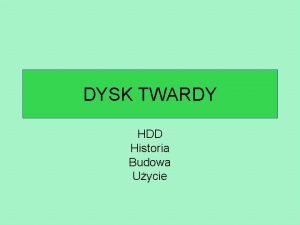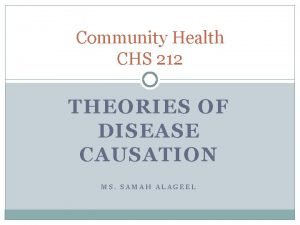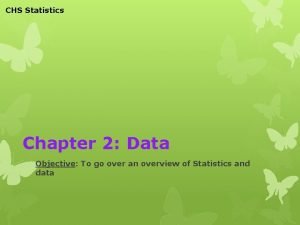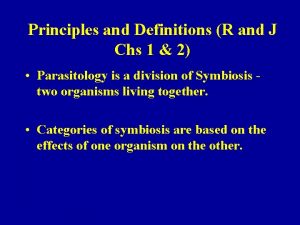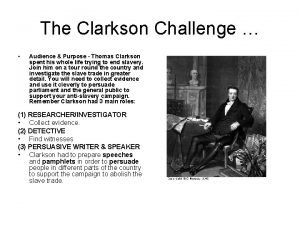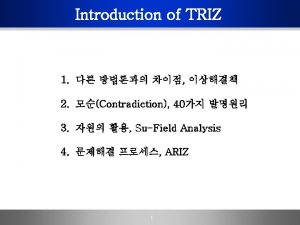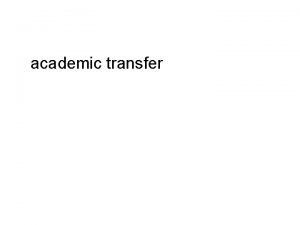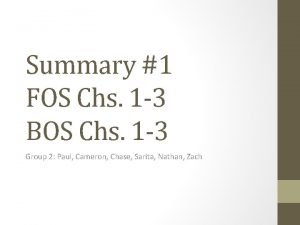Clarkson CHS Improving Academic Standards Movie Dufour Dufour













- Slides: 13

Clarkson CHS Improving Academic Standards

Movie: Dufour & Dufour – A Difficult Conversation This embedded movie can be found at https: //www. youtube. com/watch? v=nvkes 0 MFYL 4 if your version of Power. Point does not have the Youtube player installed

THE PRESENT SITUATION Ø What follow-up occurs for students who are awarded D or E grades in my learning area? Extended submission of the task, alternative work, nothing? Ø What is the HOLA’s involvement before a student can be awarded D or E for a semester grade in my learning area? Ø What discussions take place in performance management meetings about my use of strategies for reducing D / E grades? Ø What resources and support are provided or required to minimise or eliminate the awarding of D or E grades in my learning area ? Ø Do students who do not complete tasks have an impact on the motivation and learning of other students? Are there consequences from non-completion and non-participation that are obvious to other students in the class? Ø A rising tide lifts all boats. Conversely, what happens to student engagement if there is little effort by some students and few consequences following their actions?

Year 9 NAPLAN comparative performance with ‘like’ schools School Numeracy Reading Writing Spelling P&G Cannington -0. 3 -0. 5 -1. 3 0. 6 0. 2 Clarkson -1. 6 -0. 9 -1. 0 -0. 1 -0. 6 lowest equal lowest John Tonkin -0. 4 -0. 8 -0. 2 -0. 6 Eaton College -1. 4 -0. 9 0. 1 -0. 9 -0. 4 Rockingham -0. 2 -0. 1 -0. 4 0. 1 0. 4 South Fremantle -1. 4 -0. 9 0. 5 0. 0 -1. 4 second lowest Are our students academically or behaviourally different from students at like schools? If not, why are our results near the bottom of the group? What is happening?

There is likely to be a strong correlation between students graded at D or E and students who are disengaged or disruptive in the classroom. A focus on strategies to improve student engagement, participation and completion of all tasks will likely flow into a more engaged and productive classroom for all students. AITSL standards require all teachers and leaders to Ø 3. 1 Establish challenging learning goals Ø 3. 6 Evaluate and improve teaching programs Ø 6. 1 Identify and plan professional learning Ø 6. 3 Engage with colleagues and improve practice How do these occur in your learning area? When do these occur? Is there a focus on strategies to lift the performance of all students by ensuring that all students complete class tasks and engage in all class activities? What teamwork and resources are provided to assist you in these goals?

D and E assessment monitoring in 2013 Ø Teachers will provide the HOLA with a list of students awarded D or E grades, a short reason for the grade, and specifics about strategies to improve academic outcomes for each of the students on the list. Ø No student may be awarded a report grade of D or E unless this grade has been discussed with and approved by the HOLA. Ø The HOLA will regularly inform the Principal of leadership strategies and teacher support being provided by the HOLA to improve academic outcomes and reduce D and E grades in the learning area. Ø Reducing the number of D and E grades will be a central focus in performance management discussions at all levels.

What will this look like in performance management? Geoff, I’m concerned about the D and E grades in your class. Our target is to minimise the number of D and E grades, because engaging these students and improving their grades will create a much better learning environment for everyone in the class. A rising tide lifts all boats. I have your list of D/E students. Can we go through this list and discuss the reason for each student’s grade and what strategies you are employing to engage each student in completing all class tasks? What is the follow up in your class for students who do not submit a task, or who do minimal work in a task? What assistance can I provide? Are you happy with the success of your strategies with D/E students? What professional development do we need in our team?

Will a focus on D and E grades produce better results for the whole school? Children’s education in Islington UK was failing badly In 2000. The proportion of students passing five or more exams was just 28%, which was 22% behind the UK average. Today 92% of the borough’s schools are now judged to be ‘good’ or ‘outstanding’, and 75% of pupils are now achieving five A to C grades at GCSE. What changed? Key changes included a complete overhaul of data gathering and sharing, the establishment of peer training and mentoring for teachers, a greater focus on targeting and identifying children at risk of falling through gaps in the education system and greater pastoral as well as academic support for children. Simple improvements in teaching approach can have profound effects for students.

Four simple strategies to improve D / E grades 1. Arrange instruction to ensure success Students who come to class and do not succeed are rarely engaged. “What’s the point – I know I’m going to get it wrong” is a common statement from this type of disengaged student. Providing scaffolding and sequencing is critical to increase engagement and success. 2. Increase active responding When students sit idly while the teacher talks, the teacher has to hope that the information somehow sinks in and can be used by the student later on. When students are actively demonstrating learning by speaking, writing, building, or responding they are more likely to feel that they are engaged and succeeding in learning. 3. Provide continuous feedback Quality feedback has two purposes: to help motivate; and to help develop a response. Feedback should always be clear, useful, and motivational for the student. Feedback about a student’s progress in a task creates engagement and motivation. 4. Add a reward to learning Student engagement tends to be most apparent when students are motivated by success with the tasks at hand feel rewarded in an intrinsic manner. To build student engagement you want your students to find enjoyment and value in the successful mastery of the lesson’s content. Your lesson structure and content will be major factors in creating this environment.

IMPROVING THE SITUATION THIS YEAR What strategies will be implemented by you in your classes to reduce the number of D/E students and raise general academic achievement?



Guidelines for Academic Standards performance management conversations Assume good intentions from participants in a discussion Disagreement is valid, but teamwork to achieve a goal is not negotiable. If in doubt, ask the person to share assumptions and thoughts behind their position Ask for clarification of disagreement, explanation of statements. Find common ground of agreement What are shared areas? Build on these shared values to gain engagement. Build shared knowledge Share what works and what fails, to build team strength and knowledge. Share you own assumptions and thought processes The data shows …… From this we can determine ……… We need to make changes to ………. . The strategies we can use are ……… Our timeline is …………. . Our indicators of success will be ………… Effective leaders say what needs to be said in a situation Disagreement is valid, but refusal to support team goals and strategies is not. We must make changes to reduce the number of students awarded D or E. We can negotiate strategies and processes, but the need for change is not negotiable.

